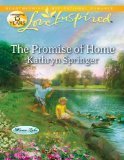Hannah Fielding's Blog, page 154
June 25, 2012
An insider’s guide to the south of France
Don’t miss my article on travel website Wanderlust, ‘An insider’s guide to the south of France’, in which I share my top five off-the-beaten-track places near my home in the Côte d’Azure. Visit http://www.wanderlust.co.uk/magazine/blogs/insider-secrets/an-insiders-guide-to-the-south-of-france.
A place called ‘home’
Marvin Gaye famously sang ‘Wherever I lay my hat, that’s my home’. The inference is that, snail-like, you can carry your home with you, within you, allowing you to live nomadically without the pull to a particular place, rootless and free.
It’s a fabulous song, but one whose sentiment I’m not sure many people can honestly share. Home – the place or places you call home – matters.
I have two homes: a restored rectory in Kent, near the white cliffs of Dover, and a farmhouse in the Var region in the south of France. Both are my havens, and over the years we have owned them I have taken great care to develop them into places where I and my family feel most comfortable. Most importantly, my houses are places full of memories that ground me and my family. As Dr William A. Ward put it, ‘A house is made of walls and beams; a home is built with love and dreams.’
The concept of home is fundamental to my novel Burning Embers. Following her parents’ divorce during childhood, Coral was torn away from the home she had always known and loved: her father’s plantation in Mombasa, Kenya – Mpingo. She has been happy enough living in England since, but something has been missing for her, and at the start of the book there is a sense of release now that she is finally returning to her birthplace. Mpingo, which holds such sentimental value for her, given that it was her father’s who has now passed away, will be her home now. And when she senses a threat to her keeping that home, she reacts as a lioness under attack, resolute in her determination to protect her home. Rafe, meanwhile, is similarly attached to his home, Whispering Palms, the neighbouring plantation to Mpingo.
The question at the end of the novel, then, when Coral and Rafe find their way to each other, is what will happen next? Where will they call home? Mpingo? Whispering Palms? Someplace new? Another place that has meaning for them? Now that they have each other, does where they live matter so much?
I won’t give away the ending of the book; read for yourself and then let me know what you think! I will simply end with the famous adage that holds true in all circumstances: home is where the heart is.
WIN a romantic holiday in Kenya
UK readers, don’t miss this week’s Burning Embers competitions in Women’s Own and Now magazines, for your chance to win a romantic holiday for two to Kenya.
Now magazine competition
The prize is an all-inclusive nine-night stay at the glamorous Papillon Lagoon Reef resort, plus a trip to the Tsavo National Park and a romantic dinner cruise. Ten runners-up will also win a copy of the book, so they can be taken on their own Kenyan romance.
Women’s Own magazine competition
Win a two-night stay with game drives at Amboseli Serena Safari Lodge, a trip to Tsavo National Park, overnight stay at Kilaguni Serena Safari Lodge and three nights at Serena Beach Hotel & Spa.
Good luck!

The Papillon Lagoon Reef Resort
June 23, 2012
Love that weathers the storms
 Tempestuous, tumultuous, wild, stormy, turbulent, electric, thunderous – these are words we’re used to reading in romance novels in descriptions of the passionate relationship between the man and the woman. They of course relate to the elements: Nature demonstrating her power through storms.
Tempestuous, tumultuous, wild, stormy, turbulent, electric, thunderous – these are words we’re used to reading in romance novels in descriptions of the passionate relationship between the man and the woman. They of course relate to the elements: Nature demonstrating her power through storms.
I recently read the last novel of prolific romance author Penny Jordan (review to follow in coming weeks), and got utterly lost in a very romantic scene set during a thunderstorm. As I read, I found myself thinking of my own book, Burning Embers, in which Coral and Rafe are brought together during an intense electric storm:
A flash of long blue lightning split the sky, closely followed by a crash of thunder. Coral instinctively threw herself into Rafe’s arms, hiding her face against his broad chest. She had always had a strong phobia of thunderstorms. Now she knew why the place had seemed eerie, why there had been no bird song or insect tick-tocks, no scuffling and ruffling in the undergrowth. Even though the skies when they entered the valley had not foretold the electrical storm that was to come, just like with the animals, her instinct had told her that something was wrong. But she had been too distracted by the turbulence crackling between her and Rafe to pay attention to the changing sky.
Like the protagonist of Penny’s novel, Coral is deeply afraid of storms (aren’t we all, a little?). Her vulnerability, coupled with the drama created by the storm, breaks down barriers and allows a new connection and closeness to form between Coral and Rafe.
Some of the most powerful, atmospheric scenes in literature are set against a backdrop of driving rain and howling wind and cracking thunder and brilliant lightning. Think of the pathetic fallacy (the weather reflecting the character’s inner world) in Shakespeare’s works, particularly the dark Macbeth and the madness-riddled King Lear. In the romance genre, Jane Eyre is a good example, as is Wuthering Heights – Cathy’s spirit embodied in violent weather, and tortured Heathcliff roaming the windswept moors.
But for me, it is a poem that most sticks in my mind as employing a storm to superb dramatic effect. I first read Robert Browning’s ‘Porphyria’s Lover’ as a student studying literature, and from the first verse I was drawn into the tense, dangerous atmosphere:
The rain set early in to-night,
The sullen wind was soon awake,
It tore the elm-tops down for spite,
And did its worst to vex the lake:
So much of the poem is beautifully romantic, but the storm raging outside acts as a poignant warning for the reader that beneath the rosy surface of the union of lovers, peril lurks, and we are uneasy to the point that we read those terrible words ‘And strangled her’. (If you would like to read the full poem yourself, visit http://www.bartleby.com/101/720.html).
There is to be no happy aftermath of Browning’s storm; but in the romance novels I love, the storm is a vehicle that pushes the lovers further towards their happy ever after, to the rainbow after the storm, if you like; for as Sylvia Voirol put it, ‘Rainbows apologize for angry skies.’
June 22, 2012
Review: Pleasures of a Tempted Lady by Jennifer Haymore
You know that moment when you rather wearily order a desert in a restaurant, knowing you are full and not expecting much of the crème brûlée, but when you take that first spoonful – oh my! It’s delicious, and at once you give up following the conversation of your companions and lose yourself in a decadent few minutes of sheer escapism. That’s the best analogy I can find for reading Pleasures of a Tempted Lady.
I was delighted to have the opportunity to read a copy of this book pre-publication, and from the synopsis I had expected to enjoy it given the era in which it is set, the passionate cover and the high seas adventures promised. But I hadn’t expected to be quite so gripped! Jennifer is a wonderful writer with such expert control of the narrative – drip-feeding information carefully, never telling the reader more than she needs to know, and the result is an intriguing read. In addition, there is so much action, so many twists and turns, that I was quite simply riveted.
This isn’t a book weighed down in over-poeticism and writing that reads as if the author were penning the novel in the time it is set, which can often be the case, I find, in historical romance – though that is not at all to say that the writing isn’t well-crafted because it absolutely is. The writing is direct and modern in feel (outside of the dialogue, of course), which means it is the plot and the characters that are the focus. And I loved these two elements of the book. The plot drew me in from the outset – such drama and heartache and longing. And the characters were especially gripping – I loved the Donavan sisters’ dynamic, and was delighted when it became clear that the novel was to cover not just one love story, but two. And sensual love stories at that – the love scenes were moving indeed.
Jennifer Haymore is an exciting new find for me, and I shall be sure to check out her other books. If you like historical romance, and page-turning books with strong characters and dramatic stories, then I very much recommend Pleasures of a Tempted Lady to you.
Pleasures of a Tempted Lady is available now from Amazon; click on the book cover below to visit the store.
June 21, 2012
Colourful flowers: The poet’s darling
Have you heard of chromotherapy? It’s a sort of therapy that draws upon colour to rebalance and heal. It’s labelled pseudoscientific by some, and I’ve no personal experience of it. But it seems to me that colours do have significance. If I wear black from head to toe, I can be sombre. If I wear bright, cheerful colours, I’m more likely to feel energised and positive – and, crucially, feel the creative juices flowing.
I grew up in a house in a hot country surrounded by lush green gardens and overlooking the deep blue Mediterranean, so my love for bright colours is innate.
I love the colours of flowers and plants in particular. A garden planted with a range of trees and shrubs and flowers creates the cacophony of sensory input I need in order to dream up love stories in exotic settings. No wonder William Wordsworth called the daisy ‘The poet’s darling’.
Given that Burning Embers is set in Kenya, I was able to draw on a wonderful array of greenery when writing descriptions for the novel. Scarlet bougainvillea, purple wisteria, and yellow mimosa. Rustling palms, vibrant orchids. Plumeria. African tulip. Monkey pod, chalice lilies, jacarandas and wisteria. Flowering cactus. Begonia on a cedar trellis. Acacias, tamarind, frangipani, alabaster anthuriums, coral-pink kapok trees. Dwarf citrus trees, fig trees and the aptly named flame tree.
Today, I thought I would share with you a slide show of these plants and flowers and trees, so you can for yourself get a feel for the setting of Burning Embers.
[[Show as slideshow]]
June 19, 2012
The verdant hills near my home in France
Countryside in the back country not far from the house, where I go for long walks while cogitating on plots for my novels.
June 18, 2012
The birth of a writer
When does the urge to be a writer commence? The nights, as a young toddler, that you sit on your parent’s knee and gaze at the scenes in a picture book while the words you hear spoken twist and gallop and soothe all around you? The time you first hold a pencil and, without guidance, form your first recognisable letter? The day you visit a library or a book shop and think not only that you wish you could read every book you see, but also write one and be part of this wonderful ‘club’? Or perhaps it is the moment you first receive praise from another for your writing, or the suggestion that perhaps, indeed, you can write – such an exciting discovery!
It seems to me that most people who write as adults have had the desire, the need, to do so from fairly early in childhood – though it may go unacknowledged for so many years before you are ready to write, or have the space and the means to do so. If that is the case, and great writers are born of inquisitive, creative, inspired children, then education is all the more important.
Have you followed the news in the UK recently about changes that are on the cards for the national curriculum? Responding to concerns about levels of literacy and spoken and written English, the government is planning to tighten up spelling and grammar teaching. And according to a recent article in the Guardian, all children will also learn and recite poetry.
I have my own education, at a convent school in Alexandria, in part to thank for my love of poetry (that and my parents), so I think it will be wonderful for children to get more involved with poetry. And in ‘performing’ a poem, they will engage more with the contents, and gain confidence in their mastery of language. What will be most important, I think, is that they have the opportunity to choose the poems they most like to recite from a suitable selection, because when you allow a child choice, you empower him. And creativity is born of sources of inspiration with which you naturally engage.
I was also interested to read in the Guardian article that proposals are being put forward to make learning a second language compulsory at primary school, from the age of seven. At that age I was speaking French, English and Arabic, and I think it is certainly easier to pick up a language as a young child. As well as the obvious benefits of learning another language (confidence, conversing with people of other cultures, opening up opportunities for travel and so on), should they go ahead, the language lessons for younger children can also help them engage further with writing and reading in their own language – for all study of linguistics feeds the part of the mind that loves to make sense of the world through letters arranged into words arranged into sentences arranged into paragraphs.
It will be interesting to see how the changes roll out. I hope it has the desired effect and helps more children come to know the joy of reading and writing, because it’s a joy that is so deeply affective it stays with you for life.
June 16, 2012
Book review: The Promise of Home by Kathryn Springer
A heart-warming, touching ‘clean’ romance with a charming setting and appealing characters.
I found myself absorbed in the story from the first pages, starting as it does with two frightened and traumatised children who pull at your heart strings, and their caring but way out of her depth aunt, Jenna. The story is simple, but powerful in its messages – the true meaning of family, the power of letting go and of forgiveness, the joy and peace that come with following your heart and being your authentic self and the fulfilment that comes from finding a true home at last.
I was particularly moved by the author’s exploration of the choice between career and success and the modern, fast-paced, image-conscious world – and a simpler, calmer more creative existence closer to nature. By the end of the book I found myself slipping into daydreams about cabins amid woods in rural Wisconsin, and small towns where communities thrive.
The romance that blooms between Jenna and her enigmatic neighbour, Dev, is expertly set up and developed, and I found myself really rooting for them to be together despite what seemed like irreconcilable differences, given that Jenna is a city girl and Dev has shunned that existence. Jenna is a warm and realistic heroine, and Dev is a most attractive hero – I have always found male characters with strong paternal and protective instincts very appealing.
In all, I had a wonderful afternoon curled up in an armchair lost in The Promise of Home, and I put the book down with a light heart and a smile on my face. Lovely.
June 15, 2012
‘The Most Romantic…’ survey
I always keep an eye out for news items that report on surveys on matters related to the heart. Usually, the results affirm that plenty of people in the world are as much hopeless romantics as am I! This week, then, I decided to set up my own romance survey – ten questions for one hundred respondents, to ascertain the most romantic movie, song, painter, date, nationality, food, drink, gift and book. In subsequent weeks I will be blogging on the result for each category.
You can find the survey here: www.surveymonkey.com/s/D7X6WB2. It’s multiple choice, with the option to add in your own responses, so it only takes a minute or two to fill out. Please do participate!









